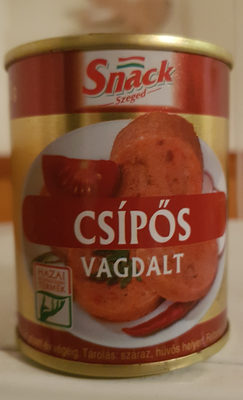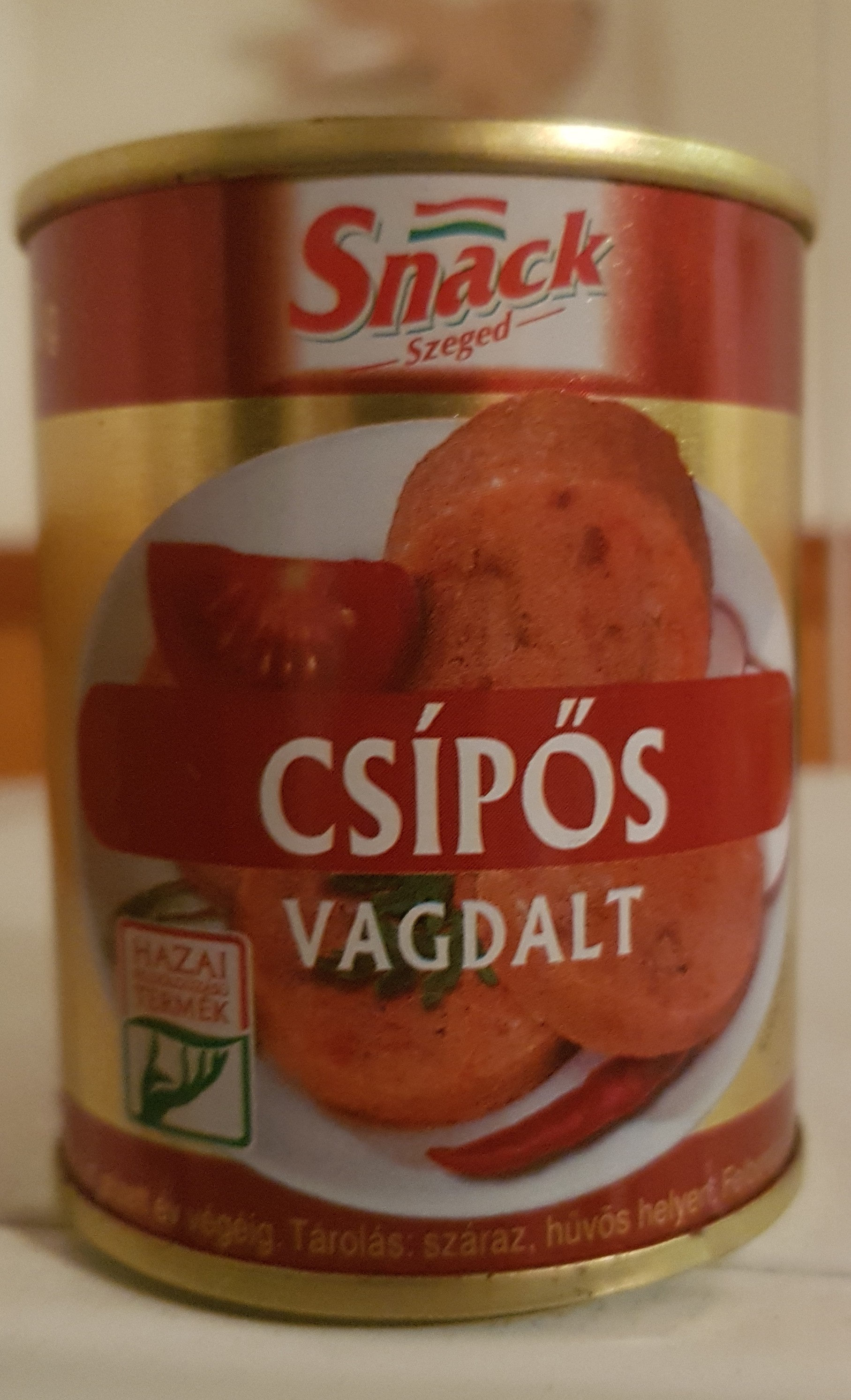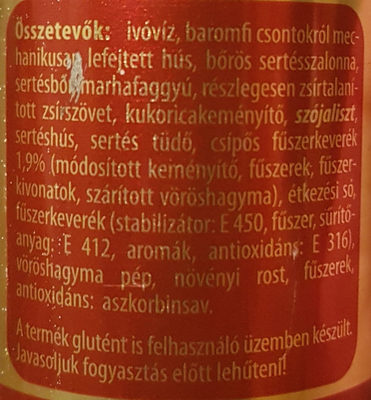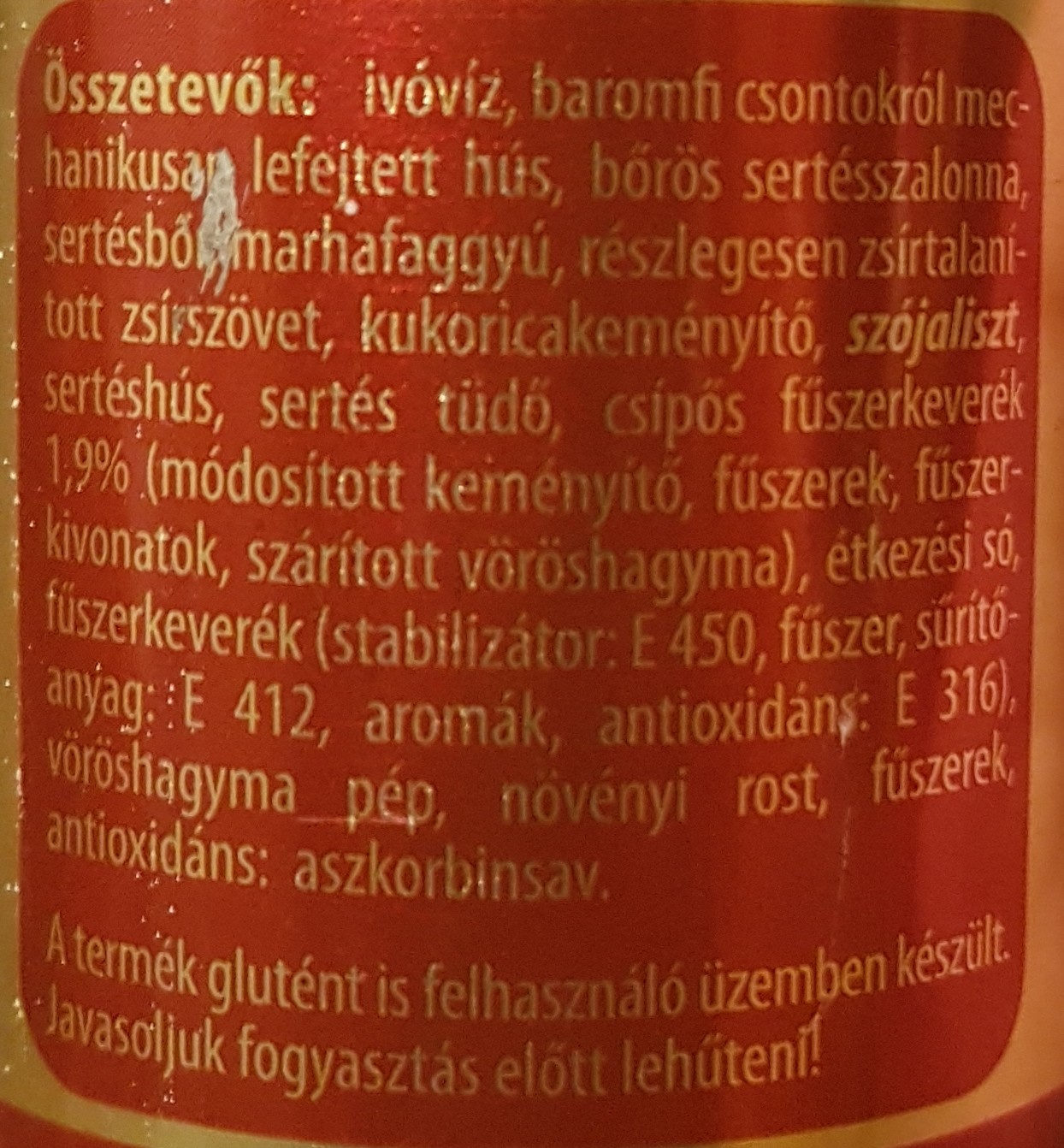Hot luncheon meat - Snack Szeged - 130 g
This product page is not complete. You can help to complete it by editing it and adding more data from the photos we have, or by taking more photos using the app for Android or iPhone/iPad. Thank you!
×
Barcode: 5998304062853 (EAN / EAN-13)
Quantity: 130 g
Brands: Snack Szeged
Categories: Canned foods, Meats and their products, Meats, Canned meats
Labels, certifications, awards: Hungarian Processed Product
Manufacturing or processing places: Szeged, Hungary
Traceability code: HU 41 EC
Link to the product page on the official site of the producer: http://szegedipaprika.hu/termekek/snack-...
Countries where sold: Hungary
Matching with your preferences
Environment
Packaging
Transportation
Report a problem
Data sources
Product added on by openfoodfacts-contributors
Last edit of product page on by packbot.
Product page also edited by bathorypeter, gourmet.








